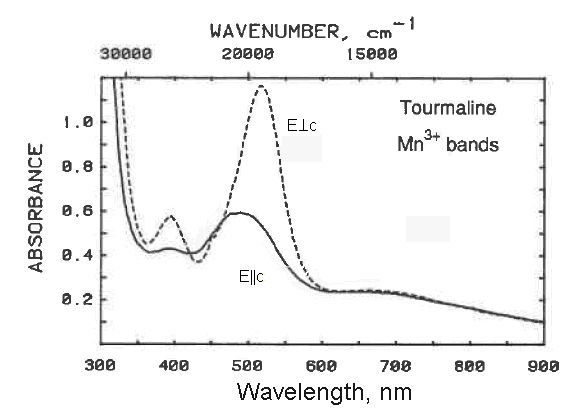Role of Natural Radiation
in Tourmaline Coloration
Ilene M. Reinitz, George
R. Rossman
Division of Geological and Planetary Sciences
California Institute of Technology, Pasadena, CA 91125
Abstract
The optical spectra of elbaite tourmalines subjected to large,
controlled doses of gamma radiation have been compared to those of
natural specimens. Both naturally pink and laboratory-irradiated
elbaites show the same spectroscopic features. Optical absorption
features of Mn2+ in nearly colorless elbaites are lost during
laboratory irradiation, indicationg a Mn2+ - Mn3+ transformation during
the radiation process. Measurements of the radiation levels in
tourmaline pockets in sourthern California pegmatites have been used to
compute the doses that natural samples should have experienced over
geologic time. These doses generally correspond to the doses required
to restore the color to elbaites that have been decolorized by
laboratior heat treatment, indicating that color in naturally pink
tourmaline is a product of natural radiation. This radiation could have
been effective only after the pegmatite cooled below the decolorizing
temperature of tourmaline, suggesting that most pink elbaites orginally
grew nearly colorless in the pegmatites and only later attained their
pink color through oxidation of Mn via ionizing radiation.

